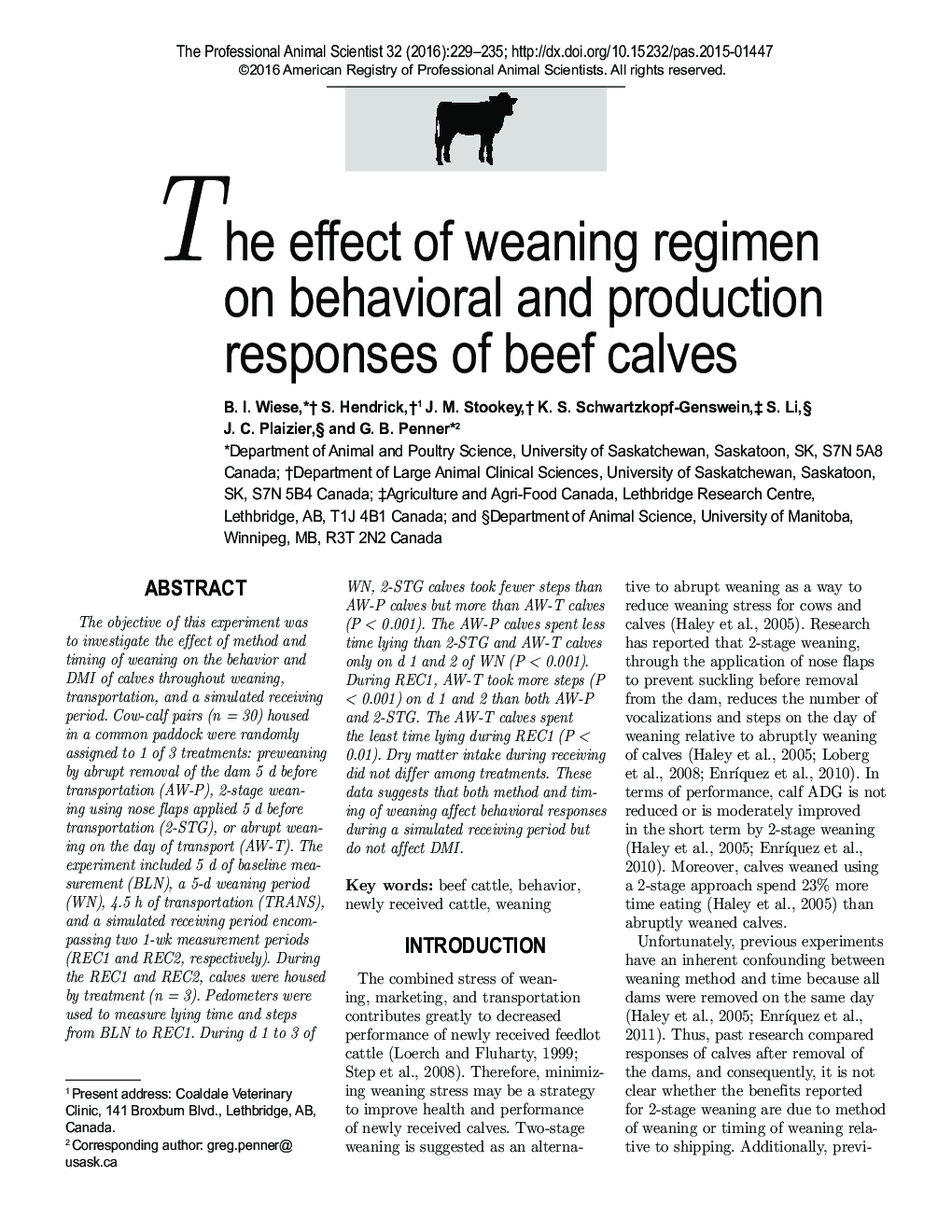| Article ID | Journal | Published Year | Pages | File Type |
|---|---|---|---|---|
| 10161731 | The Professional Animal Scientist | 2016 | 7 Pages |
Abstract
The objective of this experiment was to investigate the effect of method and timing of weaning on the behavior and DMI of calves throughout weaning, transportation, and a simulated receiving period. Cow-calf pairs (n = 30) housed in a common paddock were randomly assigned to 1 of 3 treatments: preweaning by abrupt removal of the dam 5 d before transportation (AW-P), 2-stage weaning using nose flaps applied 5 d before transportation (2-STG), or abrupt weaning on the day of transport (AW-T). The experiment included 5 d of baseline measurement (BLN), a 5-d weaning period (WN), 4.5Â h of transportation (TRANS), and a simulated receiving period encompassing two 1-wk measurement periods (REC1 and REC2, respectively). During the REC1 and REC2, calves were housed by treatment (n = 3). Pedometers were used to measure lying time and steps from BLN to REC1. During d 1 to 3 of WN, 2-STG calves took fewer steps than AW-P calves but more than AW-T calves (P < 0.001). The AW-P calves spent less time lying than 2-STG and AW-T calves only on d 1 and 2 of WN (P < 0.001). During REC1, AW-T took more steps (P < 0.001) on d 1 and 2 than both AW-P and 2-STG. The AW-T calves spent the least time lying during REC1 (P < 0.01). Dry matter intake during receiving did not differ among treatments. These data suggests that both method and timing of weaning affect behavioral responses during a simulated receiving period but do not affect DMI.
Keywords
Related Topics
Life Sciences
Agricultural and Biological Sciences
Animal Science and Zoology
Authors
B.I. Wiese, S. Hendrick, J.M. Stookey, K.S. Schwartzkopf-Genswein, S. Li, J.C. Plaizier, G.B. Penner,
